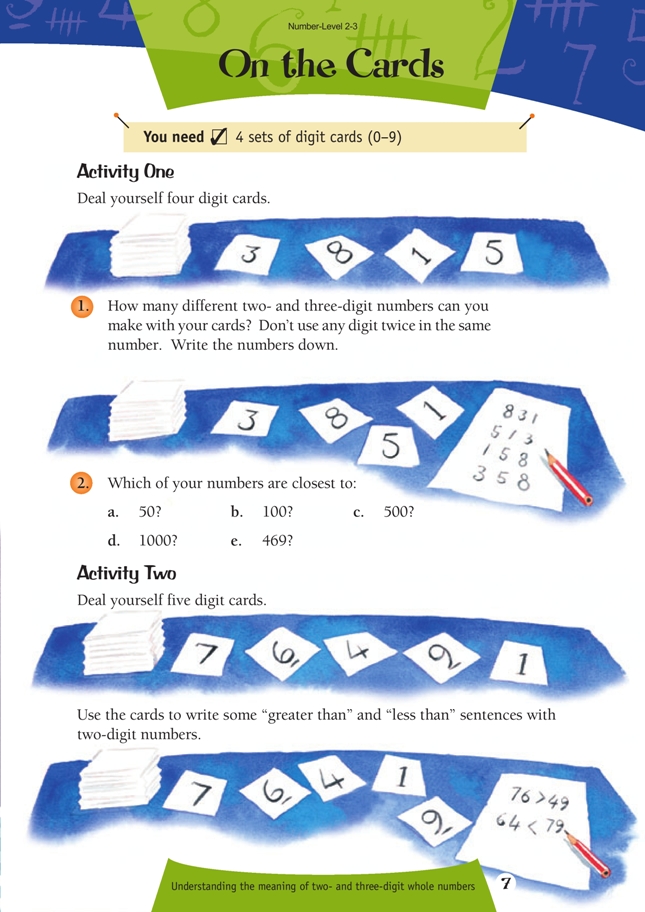This is a level 2 number activity from the Figure It Out series. It relates to Stage 5 of the Number Framework.
A PDF of the student activity is included.
Click on the image to enlarge it. Click again to close. Download PDF (220 KB)
show understanding of place value using digit cards to make numbers
4 sets of Numeral cards
FIO, Level 2-3, Number, On the Cards, page 7
Digit cards can easily be made from file cards or offcuts. They have a variety of uses, either independently or in conjunction with other equipment.
Activity One
Encourage students to use a systematic approach to finding all the possible numbers. This may involve using a tree diagram or writing an organised list. For the digits shown in this activity, one strategy might be:
.gif)
For less able students, the problem can be limited to two-digit numbers. You could place the numbers on a number line in relative position and ask questions like “Which number is closest to 45?”
.gif)
Distance on a number line is a nice model for solving “closest to” problems:
Students will need more advanced strategies for solving “closest to” problems with three-digit numbers. For example: “Which number is closest to 469?”
.gif)
Activity Two
Students will need to apply place value knowledge and realise that the digit with the highest place value in each number is considered first when determining “greater than” or “less than” relationships. For example, to determine which is greater, 79 or 81, the digits in the tens place have the greatest total value and must be compared first. This can become complex when numbers with three or more digits are involved, for example, 619 and 641. The hundreds digits are compared first (the same value) and then the tens (40 is greater than 10).
Answers to Activities
Activity One
1. Two-digit numbers: maximum of 12
Three-digit numbers: maximum of 24
The two- and three-digit numbers will vary,
depending on the cards the student has dealt.
2. Answers will vary, depending on the cards the student has dealt.
Activity Two
Answers will vary.
